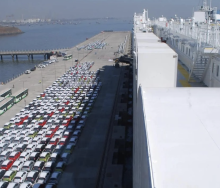South Africa’s economy grew slower than anticipated during the fourth quarter of 2023 but is expected to fare better in the coming months.
According to Statistics SA, real GDP grew by 0.1% in the fourth quarter and, for the year as a whole, the economy expanded by 0.6%, down significantly from 1.9% in 2022.
Nedbank Group Economic Unit economists said, commenting on the latest results, that GDP growth had emerged lower than the market forecast of 0.3% and lower than the unit had anticipated.
“The increase in electricity production over the quarter facilitated growth in manufacturing and mining output. Transport, storage and communication, finance and personal services also expanded over the quarter. In sharp contrast, agriculture, construction, domestic trade, and government services declined sharply,” the economists said.
Expenditure on GDP grew by 0.1% quarter on quarter in the fourth quarter, following 0.1% growth in the third quarter.
“The modest recovery resulted from an increase in gross domestic expenditure. The drag from the negative export position worsened as imports jumped, while export growth remained modest. The breakdown of gross domestic expenditure shows a recovery in household consumption expenditure and inventory accumulation over the quarter, while government consumption expenditure and gross fixed capital formation contracted,” the economists noted.
However, the bank’s economists forecast that the economy should improve in 2024.
“The economy should fare slightly better in 2024, but the recovery is only expected in the second half. In the first six months, economic activity will likely remain weak, weighed down by the combined weight of continued power outages and transport bottlenecks, soft global demand, low international commodity prices and the ongoing squeeze emanating from high domestic interest rates,” the economists said.
Later in the year production and exports should benefit from firmer global demand as disinflation intensifies, major central banks ease monetary policy and China’s fiscal and monetary stimulus takes greater effect.
“At the same time, domestic inflation is forecast to shift down a gear around mid-year, enabling the SARB (SA Reserve Bank) to start cutting interest rates, which should support real incomes and lower debt service costs, lifting consumer confidence and demand,” the economists said.
They forecast Government spending to remain positive, but growth in fixed investment is likely to fade in response to the challenging operating environment and subdued growth prospects.
“Altogether, we forecast GDP growth of around 1% in 2024.”













